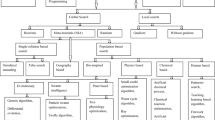Abstract
In an assembly, there are two ways to control the deviation of critical dimensions. One is by keeping the deviation of the critical dimension small by tightening manufacturing tolerances and controlling aging and environmental effects. This approach is traditional and expensive, as it requires tighter manufacturing tolerances and protection from aging and the environment. The second is by moving the nominal values of the non-critical dimensions to a less sensitive portion. This approach is very helpful in improving the quality with no additional cost. One can analyze any number of designs very early in the concept development stage of a project. After the concept design the cost-based optimal tolerances for the corresponding dimensions are allocated. The continuous ants colony algorithm, a kind of meta-heuristic approach, is used as an optimization tool for minimizing the critical dimension deviation and allocating the cost- based optimal tolerances.
Similar content being viewed by others
References
Ullman D (1992) The mechanical design process. McGraw-Hill, New York
Chase KW, Greenwood WH (1988) Design issues in mechanical tolerance analysis. Manuf Rev 1:50–59
Chase KW, Gao J, Magleby SP (1995) General 2-D tolerance analysis of mechanical assemblies with small kinematics adjustments. J Des Manuf, pp 287
Sutherland GH, Roth B (1975) Mechanism designs: accounting for manufacturing tolerances and costs in function generating problems. ASME J Eng Ind 98:283–286
Lee WJ, Woo TC (1989) Optimum selection of discrete tolerances. ASME J Mech Trans Automat Des 111:243–251
Dong Z, Hu W, Xue D (1994) New production cost-tolerance models for tolerance synthesis. J Eng Ind 116:199–206
Kalyanmoy D (1996) Optimization for engineering design. (Prentice-Hall), New York
Dorgio M, Maniezzo V, Colorni A (1996) Ant system: optimization by a colony of cooperating agents. IEEE Trans Syst Man Cybern 26:29–41
Jayaraman VK, Kulkarni BD, Sachin K, Prakash S (2000) Ant colony framework for optimal design and scheduling of batch plants. Comput Chem Eng 24:1901–1910
Chase KW (1999) Tolerance allocation methods for designers. ADCATS report no. 99-6
Moreo D, Bonabeau E, Theraulaz G (2000) Ant algorithm and stigmery. Fut Generation Comput Syst 16:851–871
Creveling CM (1997) Computer aided tolerancing techniques: a handbook for developing optimal specifications. Addison-Wesley, Boston
Chase KW (1999) Minimum cost-tolerance allocation. ADCATS report 99-5
Ho Y-C, Moodie CL (1998) Machine layout with a single row flow path in an automated manufacturing systems. J Manuf Syst 17:1–2
Author information
Authors and Affiliations
Corresponding author
Rights and permissions
About this article
Cite this article
Prabhaharan, G., Asokan, P. & Rajendran, S. Sensitivity-based conceptual design and tolerance allocation using the continuous ants colony algorithm (CACO). Int J Adv Manuf Technol 25, 516–526 (2005). https://doi.org/10.1007/s00170-003-1846-0
Received:
Accepted:
Published:
Issue Date:
DOI: https://doi.org/10.1007/s00170-003-1846-0




